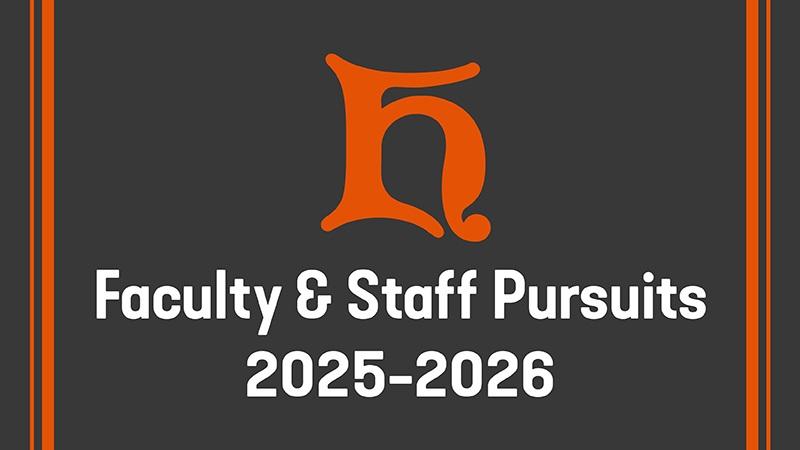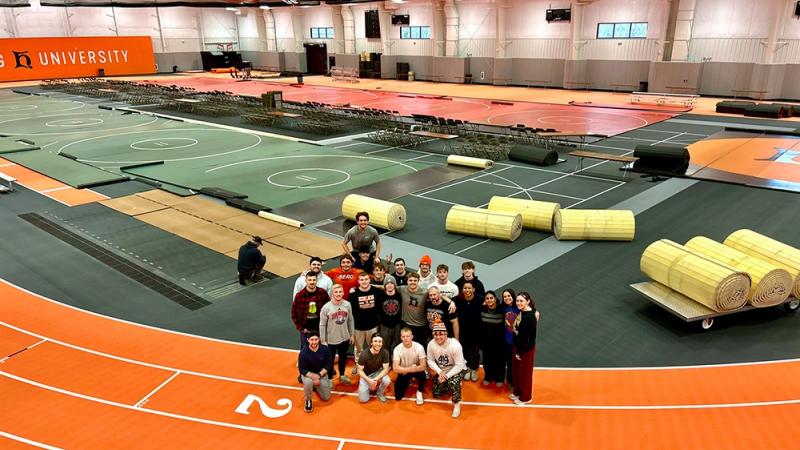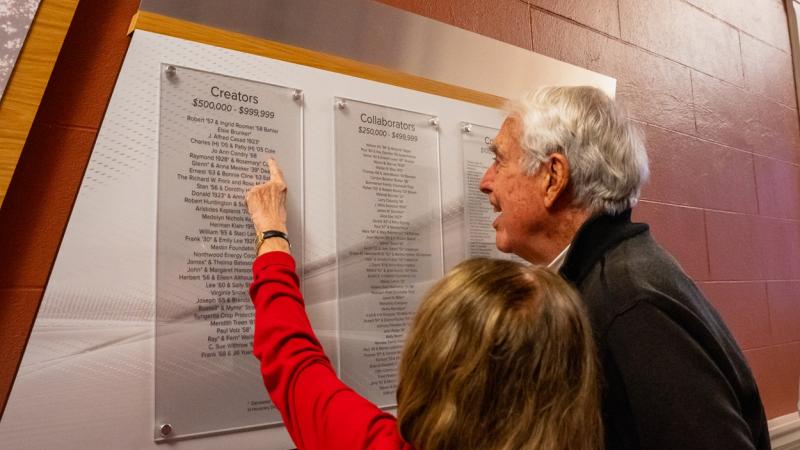Bio students discover Tiny Earth is full of possibilities
So, just how many bacteria live in the soil? Turns out, a lot!
“I used to think of soil as just crushed-up rock with worms in it,” says senior biology Chayce Schaub. “But now, it seems like it’s its own little world, filled with life that’s invisible to the naked eye.”
Chayce and the students in Dr. Justin Pruneski’s Microbiology class have been conducting a semester-long Course-Based Undergraduate Research Experience (CURE) in association with Tiny Earth. It’s the fifth year that Justin has utilized the concept in his class.
For the project, the 26 students have been addressing the global public health crisis of antibiotic resistance by isolating soil samples from around campus. After selecting their samples, the students have spent time culturing them, testing for bacteria that produce antibiotics and identifying and characterizing the antibiotic producers in their samples.
It’s been part independent research, part group project, and that combo gives more research exposure to more students, Justin says. Tiny Earth’s international “studentsourcing antibiotic discovery” mission opens the door to discovering antibiotics in our own backyard.
“The more people who are working on the project, the better chances that someone might isolate something that could lead to the discovery of a new antibiotic,” he says.
So, why is this research so important? According to Tiny Earth, the diminishing supply of effective antibiotics is one of the most pressing global health challenges of our century. So while students are working toward a common goal – finding new antibiotics to replace ineffective ones – their work in the lab could have a potentially significant impact, specifically in medicine.
Throughout the semester, the students have learned how to extract bacteria from their soil samples and how to grow it in petri dishes. Then, they test the bacteria against other known strains, screening to see which samples have antibiotic activity and which don’t.
Justin explains that students screened over 1,000 strains of bacteria from their soil samples, and found a total of 163 antibiotic producers, which is a very high success rate of approximately 15%. Next, they looked at the active antibiotic producers more closely to isolate and sequence their DNA to try to identify their organisms and determine what is known about them.
The thrill of the unknown keeps the research interesting, Justin says. “With the best authentic research, the students never know what they’re going to get, and I don’t know either. Every student gets something different (from their soil sample). There’s really no clear answer, and that’s what makes it exciting.
“This is real research, where the students are trying to discover something.”
Senior Hannah Ours has come to understand the value of the research project in problem-solving and critical thinking. “There are so many perspectives being brought to the table,” she says. “Everyone has a different way of thinking and solving problems, so that can contribute to the success of the project.”
In her four years at Heidelberg, Hannah has learned that in most academic labs, experiments are designed to yield consistent results with only a few sources of error leading to an unpredicted finding. This group experiment has been different. “Good results are never promised … (because in this research study), there are many sources of error,” Hannah says. From week to week, the students hoped that their previous experiments produced predicted results, “but we were always unsure of the outcome.”
“This experiment is unpredictable because every student in the lab may be working with a different species of bacteria that has different properties that allow it to thrive in certain lab conditions, but not others,” Hannah says. “Overall, it has just been exciting to not know what the results are going to look like from week to week.”
Chayce found value in “thinking on the go” and excitement in interpreting results from week to week. “There’s really no better way to learn,” he says. “However, because we were all doing the same steps of the research along the way together, it was like a bunch of individual research going on in a group fashion. That was unique and helpful to each of us.”
It didn’t take long for Chayce to reach the conclusion that bacteria are essential in the world. This knowledge will be valuable when he enters dental school in the fall. “Really getting to understand the life cycles of bacteria, as well as how naturally abundant they are, will be crucial in my profession, he says.
All of the work the students do and all of the data they collect is submitted to a centralized Tiny Earth’s database. The data is then combined with data collected by other groups, and researchers can then mine that data further. “So the work and the data really goes beyond Heidelberg,” Justin says. Additionally, all of Heidelberg’s data is archived, with students’ bacterial samples and research reports preserved for later reference and further research.
Last week, the students submitted their findings in a written report and presented in a poster session in Gillmor Science Hall.




